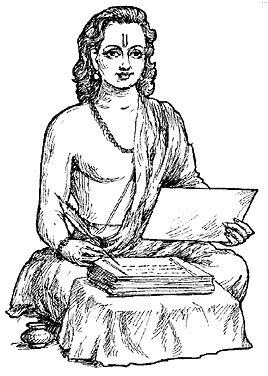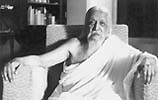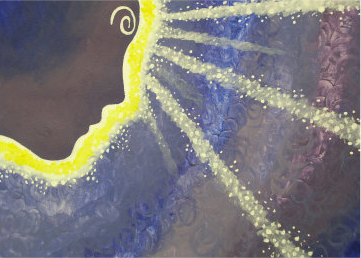CONSCIOUSNESS AND HEALTH
The spiritual dimension of health
The spiritual dimension, though included in the WHO definition of health, defies any simple understanding. It evokes different images determined by the fundamental turn of the mind itself in one direction or another. Thus, to the Occidental mind beginning to emerge out of the first exclusive leanings on material reality, the word spiritual often conveys the sense of the supernatural. To such a turn of mind, spiritual health takes the form of paranormal healing, a play of hidden forces not apparent or evident to the senses. To another line of thought and experience, more commonly seen in oriental cultures, the word ‘spiritual’ communicates the sense of a mysterious reality, a Being and Benefactor, a suprapersonal deity with whom one can relate and on whom one can depend. To such a method of approach, spiritual health appears as a boon or miracle of grace that heals our suffering and pain. To the utter materialist the word spiritual often signifies an abnormal state of mind or a delusion or even a hoax. Unable to sense either the occult and complex play of forces behind the thick wall of matter or to experience the religious exaltation of the devotee who sees the hand of Grace, the materialistic thinker admits of nothing spiritual. He discards the very phenomenon of spiritual health even before examining it. To him it is all either a hoax or a faith-healing. Between these two is the position taken by the rationalist. Born of an age of agnosticism he is sceptical of everything except that which he can rationally prove or explain. He does not outright deny but rather posits a paradoxical challenge. He says,— “If there is something spiritual as distinct from my mind and reason (which I am sure is the highest and most infallible guide) let it reveal itself as a fact to my senses and reason. If my mind cannot grasp it, if my senses cannot seize it, then well, it does not exist!” One is reminded of the paradox of the self-satisfied scientist, — “All that is knowledge I know it. And all that I do not know is not knowledge.” To such a rationalist the term spiritual health conveys, at best, certain conceivable moral and ethical values of life. To him, spiritual health is synonymous with certain virtues that seem to help mankind become better as a race.
While all these are like glimpses of the sun through tainted glasses of the mind, the word spiritual still eludes us. For when we compare notes of all that our mind believes or thinks about spirituality with those who have truly lived and experienced it, we see a wide gulf. The Kena Upanishad puts this clearly

“He by whom It is not thought out, has the thought of It; he by whom It is thought out, knows It not. It is unknown to the discernment of those who discern of It, by those who seek not to discern of It, It is discerned.”
And again,
![]()
“There sight travels not, nor speech, nor the mind.”
![]()
“It is other than the known; It is there above the unknown.”
Some taking this as a verdict against the possibility of ever knowing the spiritual dimension, posit it as an ever-unknown, a factor X, a mysterious beyond, a su
preme something or someone whom none has known or can know. This does not help us any further. It only complicates the issue as we fall back to the position of the rational thinker and his agnosticism.
But those who have explored the spiritual dimension do not say so. The Upanishad (and other spiritual records) do not stop simply at “It is other than the known.” They also describe, in great detail, the various means by which we can come in contact with the spiritual reality, receive its influence in our life and be moulded by it, even come to acquire it as a natural and permanent state of our being. In this state we discover that what is experienced is something quite other than our customary notions of moral, ethical and religious values. The spiritual state is often described as a state of experiential oneness with all things and beings, `a state beyond grief and suffering’, `a state of peace that is not merely an absence of disturbance’ a positive calm’, `a state of knowledge of the ultimate reality’, `a state of timelessness’, `eternity’, `a state which is beyond death and Immortality’. There is an essential unity of experience down the ages that cuts across differences of sex, education, social and cultural boundaries. This experience and its emergence is not dependent on the mental development. Rather the spiritual consciousness in its emergence can itself create and re-create the mind and thought and change our normal and accustomed moulds of thinking, sensing, feeling and living. And it is here that we find the most significant part of the spiritual dimension. For certainly, if such a remoulding of our life were not possible, then the spiritual element would remain a luxury whose burden our mortal poverty cannot bear. Or else it would remain the exclusive property of those who turn away from practical life and disappear into some ineffable state which to the mind of humanity will always remain a nothingness, a Nihil or an empty void.
In fact, this may be so in the beginning when our mind receives the first shock of contact with Spirit. But those who have crossed beyond this first emptiness have affirmed that this silence is the beginning of a new word, a new knowledge and a new language of life. This passage is a necessary deconditioning, an emptying of the cup of the human animal dross so as to fill it with the wine of God, the ambrosia of Immortality. The Vedic and Upanishadic traditions, the lore of the Gita, and, in our own times, the seer-vision of Sri Aurobindo, affirm the spiritual element as a state that is positive and distinct from that of the mind. They also affirm that though the mind cannot grasp it, yet the spiritual reality is not an unknowable. It is unknowable only to the mind but to a higher and greater consciousness the spirit is ever known and manifest. This greater and higher consciousness though not yet tangible to the mass of humanity is yet its secret cause and support. It is revealed in a few, veiled in others, but present in all, like the principle of electricity which is present in all things but reveals itself only in certain right combinations. It is also possible and legitimate that man can and should work towards the emergence of this now unknown factor ‘X’. In fact, Sri Aurobindo affirms that the next cycle of humanity will see the evolutionary emergence of this spiritual dimension in humanity. The resurgence of interest in yoga, the debate over the possibility of consciousness independent of material reality, the turn towards a global life, the liberalisation of spiritual pursuit, the growing need in man for freedom, equality, love and oneness, the inclusion of the spiritual dimension in fields of psychology, education, health, even the findings of modern physicists fitting the description of mystics, are some areas indicative of such a coming change.
But what forms the bridge between our mind and That which escapes our present comprehension? Intuition is the link between our normal cognitive processes and the greater gnosis. If we compare the spiritual reality to the sun (as indeed it is sometimes so compared) then Intuition is a ray of light of the Sun in its native purity. Accordingly, our mind is a derivative of That reality in lesser terms. As if the light entered a coloured and distorted medium that diminished Its intensity and fragmented it into different constituents. The mind tries to understand this oneness by adding up the parts, by comparison and contrast, but cannot build up the whole.
Time and again, it has been affirmed by individuals who realised the spiritual heights that it is possible for man to enter and live in and by a greater consciousness and Power. One hopes that the coming decades will see the rapid emergence of this veiled element. For it is this that can solve the disorders and conflicts that afflict humanity, it is this that can truly release us from the yoke of suffering and death; and it is this that can impart the harmony and balance we so much lack as a species. It is this possibility of an alteration and recreation of life by the spiritual dimension that justifies and even makes it necessary to include it as a separate factor with regard to health. For this factor can take up the lesser terms of our existence – mental, social, even physical – and remould them through its own higher term. The spiritual does not exclude but rather, being the source and origin of all, includes everything. That is why, for all its complex all-comprehensive, all-pervading movement, it remains truly the simplest since the most fundamental. And while this utter simplicity and universality of the spiritual reality boggles the mind lost in the details of a billion processes, the jig saw puzzle of the phenomenon called man and his various afflictions can be solved by this missing piece (peace) that he ever seeks after.
Bibliography
1. Sri Aurobindo, The Upanishads. Pondicherry; Sri Aurobindo Ashram Trust, 1972, pp. 155.
2. Sri Aurobindo, The Life Divine. Pondicherry; Sri Aurobindo Ashram Trust, 1972, pp. 702.
3. Bisht, D.B, Dr. Spiritual Dimension of Health. New Delhi; DGHS, Nirman Bhawan, 1985.
4. Park, J.E. and Park, K, Parks textbook of Social and Preventive Medicine. Jabalpur; M/S Banarasidas Bhanot, 1991, pp. 1-11.
Share with us (Comments, contributions, opinions)
When reproducing this feature, please credit NAMAH, and give the byline. Please send us cuttings.




